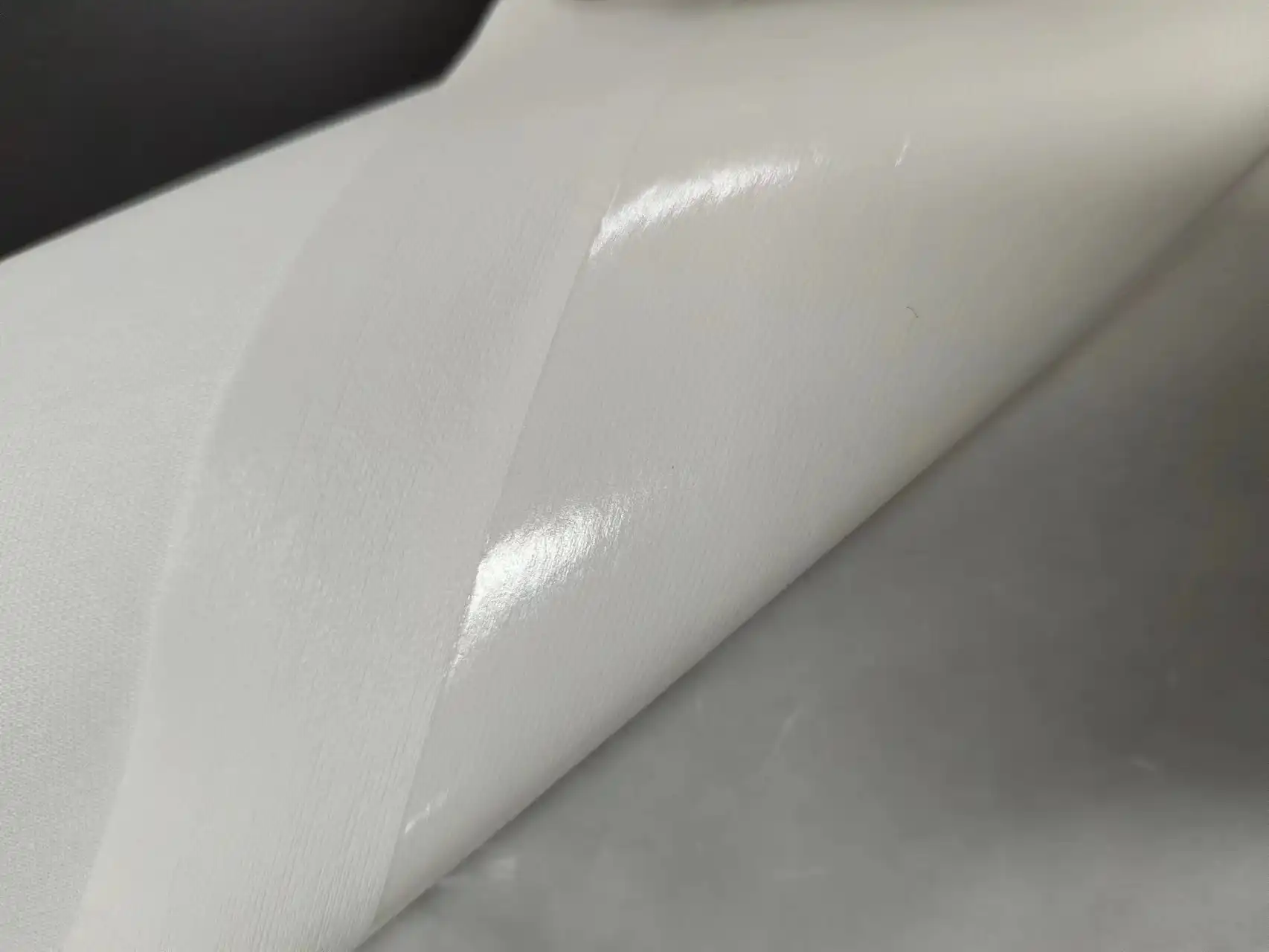Des matières premières aux produits finis : comment le film adhésif thermofusible transforme le processus de production textile
Date de sortie : 13/06/2025
Dans la production textile moderne, le film adhésif thermofusible est progressivement devenu un élément clé de l'industrie en tant que matériau de liaison innovant. Non seulement il brise les limites traditionnelles de la conception, mais il joue également un rôle important dans l'amélioration de l'efficacité de la production et la réduction de l'impact environnemental. Cet article explique en détail comment le film adhésif thermofusible transforme le processus de production, de la sélection des matières premières au produit final.

1. Sélection des matières premières et caractéristiques du film
Le film adhésif thermofusible est fabriqué à partir de matériaux polymères tels que le polyester, le polyuréthane et le polyéthylène. Chauffé, il fond et forme une liaison solide avec les textiles. Contrairement aux techniques traditionnelles de couture et de collage, film adhésif thermofusible Permet un collage sans joint par pressage à chaud, éliminant ainsi le temps de séchage et les étapes de couture. Grâce à sa forte adhérence, son excellente résistance à la chaleur et à l'eau, le film adhésif thermofusible est particulièrement adapté à divers textiles, notamment les tissus fonctionnels.
2. Processus de production simplifiés
La production textile traditionnelle implique souvent de multiples processus, tels que la couture et le collage, ce qui non seulement augmente le temps de production, mais aussi la complexité et les coûts de main-d'œuvre. L'utilisation d'un film adhésif thermofusible simplifie ce processus. Les fabricants peuvent coller directement le tissu et le film adhésif par pressage à chaud ou par transfert thermique, évitant ainsi la fastidieuse étape de couture. Cela accélère la production et réduit également les taux d'erreur, améliorant ainsi la régularité et la stabilité de la fabrication.
3. Avantages environnementaux et contrôle des coûts
Le film adhésif thermofusible est un matériau respectueux de l'environnement qui ne génère quasiment aucun déchet lors de sa production. Cela permet aux fabricants de textiles de réduire considérablement les coûts liés à l'élimination des déchets tout en respectant des réglementations environnementales de plus en plus strictes. Comparé aux colles ou aux méthodes de couture traditionnelles, Film adhésif thermofusible TPU Réduit les coûts et améliore l'efficacité de la production. Ce procédé évite les fuites de colle, les odeurs et autres problèmes, rendant le produit final plus écologique et plus sûr.
4. Performances améliorées du tissu
Les films adhésifs thermofusibles améliorent non seulement l'apparence des textiles, mais aussi leur fonctionnalité. Grâce à leurs excellentes propriétés adhésives, ils peuvent augmenter la durabilité, la résistance à la traction et l'imperméabilité des tissus. De plus, grâce aux avancées technologiques, de plus en plus de films adhésifs thermofusibles peuvent être associés à des revêtements fonctionnels pour conférer aux textiles des propriétés antibactériennes, une imperméabilité et une respirabilité accrues. Cela permet non seulement d'améliorer la valeur du produit final, mais aussi de répondre à la demande des consommateurs en vêtements haute performance.
5. Conception et innovation améliorées
L'application de films adhésifs thermofusibles élargit considérablement les possibilités créatives des designers. Dans les procédés de couture traditionnels, la conception est limitée par les propriétés physiques du tissu et les techniques de couture, mais films adhésifs thermofusibles imperméables Il repousse efficacement ces limites. Les designers peuvent facilement réaliser des assemblages complexes et combiner différents matériaux, créant ainsi des effets visuels et des expériences uniques. Par exemple, le film adhésif thermofusible est largement utilisé dans la production de vêtements sans couture, de vêtements de sport et de lingerie, qui sont des produits haut de gamme.
6. Efficacité de production accrue et consommation d'énergie réduite
L'utilisation de films adhésifs thermofusibles améliore non seulement l'efficacité de la production, mais réduit également la consommation d'énergie. Dans les procédés de couture traditionnels, la découpe et la couture nécessitent beaucoup de temps et d'efforts, tandis que les films adhésifs thermofusibles collent rapidement le tissu grâce au pressage à chaud, ce qui permet un gain de temps considérable. De plus, l'application de films adhésifs thermofusibles réduit les lavages et séchages ultérieurs, diminuant ainsi encore la consommation d'énergie et d'eau.
7. Qualité des produits et compétitivité du marché
Grâce à l'utilisation innovante du film adhésif thermofusible, la qualité des produits textiles a été considérablement améliorée. Grâce à son collage efficace et à sa connexion sans couture, le produit final offre un aspect, un confort et une durabilité accrus. Les consommateurs recherchent de plus en plus des designs sans couture, et le film adhésif thermofusible offre une solution idéale à ces exigences. Cela renforce la compétitivité des produits textiles utilisant ce type de film, attirant ainsi les consommateurs privilégiant des produits de qualité, innovants et respectueux de l'environnement.
L'utilisation de films adhésifs thermofusibles dans la production textile a transformé chaque étape, de la sélection des matières premières au produit final. Elle améliore l'efficacité de la production, réduit les coûts et ajoute une fonctionnalité et une valeur ajoutée accrues aux produits. Face à l'évolution constante des réglementations environnementales et des exigences des consommateurs, Anhui Tomis Le film adhésif thermofusible jouera un rôle encore plus important dans l'industrie textile, la conduisant vers une plus grande efficacité, durabilité et innovation.


